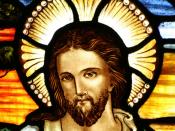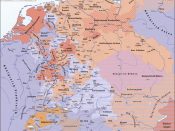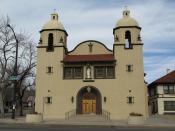Ghost History and Shakespeare's Usage
Civilization in England during Shakespeare's time knew only of ghost's mainly through religious means. During the 16th century, there were two major religions that existed in England; Catholicism, which was commonly accepted and Protestantism, which was spread thin from Europe into England. The two had similar beliefs when it came to ghosts, but differed in the areas they were initiated in. Both religions felt that a ghost could be a hallucination, a specter seen as a portent, a spirit of a dead person returned to perform some deed left undone in life, a spirit of a dead person returned from the grave or from purgatory by divine permission, which was the Catholic position, or an angel disguised as a dead person, or a devil disguised as a dead person to tempt a living relative into eternal damnation, the Protestant position. Shakespeare used the fear of ghosts from both Catholicism and Protestantism to depict ghosts, and to further support many of his brilliant works, such as Hamlet, Richard III, and Macbeth.
Before the fourteenth century, ghosts were perceived as false objects and they had very little impact on society. The only use they had was when they were called upon to assist the living with information or advice. The amount of harm or damage they could do was minuscule, due to the lack of influence they had on society. They were merely memories of the dead kept alive by those who remembered them. Right after this era,
people became more interested in art, history, and politics, as well as becoming more interested in themselves internally. Now, as society and the economy flourished, ghosts began to manifest themselves in a more active way. Ghosts became widely spread amongst society and it was common to believe or talk...


